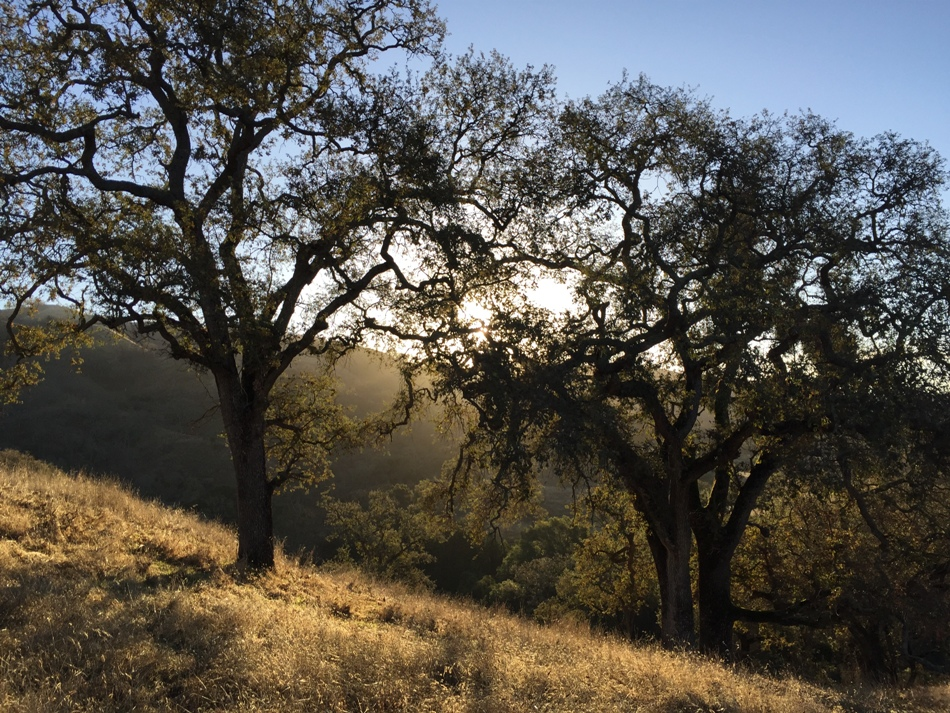Mar 31 2020
Along with the changing climate, the world’s forests are also changing. Right from the Blue Ridge forest of Appalachia to the misty redwoods in the west, several sylvan ecosystems are acclimatizing to drier environments.
 The warm sunshine streams through the canopies of two blue oaks in central California. Image Credit: Leander Anderegg.
The warm sunshine streams through the canopies of two blue oaks in central California. Image Credit: Leander Anderegg.
With the help of the U.S. Forest Service Forest Inventory and Analysis database, scientists from the University of Utah, UC Santa Barbara, and the U.S. Forest Service have analyzed how the characteristics of tree communities are changing across the contiguous United States.
Reported in the Proceedings of the National Academy of Sciences journal, the study results specify that communities, mainly in more dry regions, are turning out to be more drought-tolerant, mainly via the death of less sturdy trees.
To comprehend the factors that could be triggering changes in the forests’ ability to handle climate change, the researchers looked at two major physiological traits—the average tolerance of a species to water stress and how close this was to its highest tolerance (fundamentally, the amount of wiggle room available in the species when handling water stress).
We basically put a number on what species composition means in terms of their ability to deal with water stress.
Anna Trugman, Study Lead Author and Assistant Professor, Department of Geography, University of California, Santa Barbara
Luckily for the researchers, the U.S. Department of Agriculture monitors tree size, species, as well as abundance in over 160,000 forest plots that are randomly spread across the country. Furthermore, the U.S. Forest Service Forest Inventory and Analysis database contains more than 200 different kinds of ecosystems, spanning from cypress swamps to dry pinyon pine forests, and the temperate rainforests of the Pacific Northwest to the Atlantic hardwood forests.
Trugman and her collaborators matched the traits they were fascinated with, to the abundance of species in these plots. They subsequently utilized this to estimate a weighted average value for the community of trees present in each plot, which basically matched with the community’s drought tolerance.
These plots are surveyed every 5 to 10 years, and thus, the scientists could monitor the changes in the composition of community traits and associate these with tree mortality, climate, and recruitment.
A community can turn into a more drought-tolerant one in two ways: More resilient trees can grow more rapidly or less robust trees can die. Both result in a community that is hardier in general.
Trugman learned that it was mainly the death of less hardy trees that triggered the shifts toward greater drought tolerance, although she observed that the impacts of sapling recruitment have been less obvious over such a short time span.
Trugman also observed that the possibility of traits in a specified plot did not automatically match with the number of species present. “You don’t necessarily have a larger range in strategies if you have more species,” she added.
For example, the eastern United States does not undergo regular drought stress as much as its western counterpart, but it has comparatively high species diversity. Therefore, a majority of the trees have analogous strategies to handle water stress.
By contrast, in the Southwest, species that live together have a variety of strategies to deal with drought, regardless of many plots having comparatively low species diversity in general.
Researchers can benefit from maps of plant traits because these inform the models that predict how the landscape is impacted by climate change, explained Trugman. The trait maps allow scientists to evaluate the mismatch between the community’s present trait composition and climate suitability.
Trugman’s research refers to this variation in a community’s traits as the “trait velocity.” In other words, the faster the change, the quicker the velocity. Likewise, researchers who analyze the change in the climatic conditions of the area describe the change over time as the “climate velocity.”
Intuitively, the two rates should be connected, with ecosystems and communities shifting to adapt to the region’s changing climate.
But you could actually have a mismatch between these two. Your trait velocity could be much slower than your climate velocity, in which case the trees in that particular location are not going to be very suitable for the new climate.
Anna Trugman, Study Lead Author and Assistant Professor, Department of Geography, University of California, Santa Barbara
This means, the trees may be enduring for now, but they will not be reproducing or growing.
Researchers may not be likely to see a shift in traits at all, Trugman observed. And while this may appear to be more optimistic, in reality, it would suggest that something was stopping the communities from adapting—maybe a loss of genetic or species diversity, or merely the lack of more hardy species nearby that can give seeds.
Conversely, Trugman noticed expedited trait velocities in drier regions. This research was the first pass; she is now planning to additionally examine the association between climate velocities and trait in upcoming studies.
Generally, the results show that forests are changing to communities that can handle greater average water stress and also more inconsistency in water stress. This should protect forests against some of the impacts of climate change, at least in the near future, stated Trugman.
Ultimately, we want to put trait velocities and climate velocities in some comparable context to understand how mismatches between the two will affect our forests.
Anna Trugman, Study Lead Author and Assistant Professor, Department of Geography, University of California, Santa Barbara